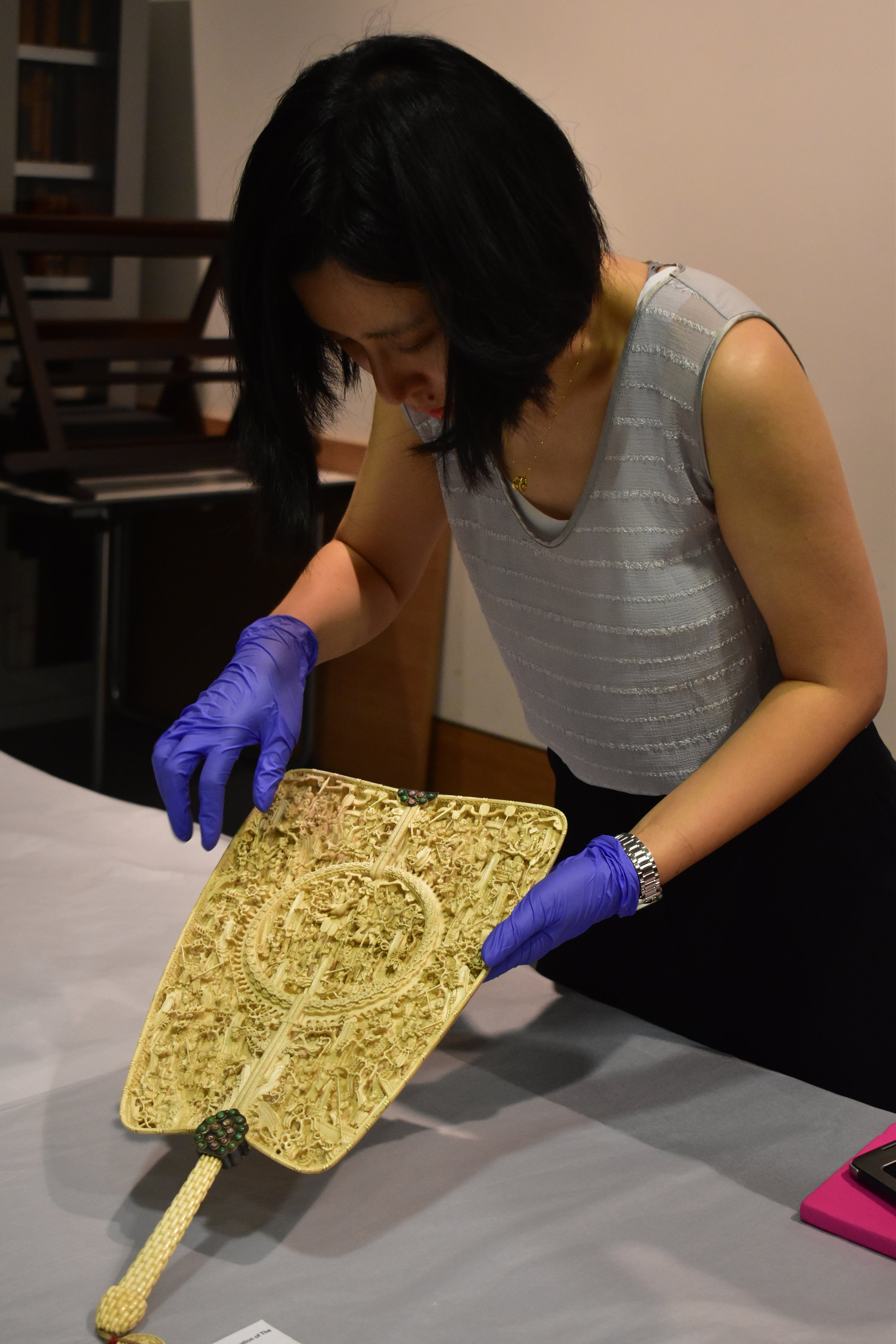ITP at The British Museum 2018: Namrata Sarmah
Namrata Sarmah attended the International Training Programme at the British Museum as the Inlaks participant for 2018. In this week's post she writes a meaningful account about her time at the British Museum and the National Museums Northern Ireland.
The moment I joined the immigration queue at the arrival terminal in Heathrow, there was a roar unlike anything I have ever heard. Visibly shaken for a moment, I tried to locate the source of this unanticipated cacophony. An enormous crowd was glued to a large-screen television in the terminal. And to be honest I never imagined my first experience of London to be a horde of football fans cheering after an Argentinean team that had just scored. For someone who had just landed in the city, there was something oddly comforting about the entire scene; complete strangers bonding with each other over World Cup. And despite the borderline hilarity of the situation, it just hinted about the warm welcome I was about to receive in the British Museum.
The next couple of days were spent in getting ourselves acquainted with my colleagues and the staff at the museum. There was a genuine warmth and welcome feeling everywhere. The fact that my colleagues in the ITP are drawn from such a multi-cultural and multi-national milieu was also a bonus point. Dr. Hartwig Fisher, the Director introduced us to the museum and informed us about the experiences that we are to gain in the forthcoming weeks. Drawn from different cultural settings with different approaches towards museum practices, the initial exchanges between ITP fellows proved to be quite a fruitful session.
As my professional engagement has chiefly been with the issues of storage, it was almost inevitable that I ended up in the stores of the Asia department. Here, again the scope and expanse of the collection was bewildering. There were many interesting sessions such as Loans, Health and well-being in the museum, Exhibitions, Photography in museums and Community Partnerships in museum. For the duration of the programme my UK partner museum was the National Museums Northern Ireland. Made up of the Ulster Museum, the Ulster Folk and Transport Museum and the Ulster American Folk Park, I had an amazing experience to exploring one of the many regional museums of the UK for ten days. Ulster Museum, the largest in Northern Ireland is another microcosm of this small world. Mesolithic and Neolithic tools, botanical and zoological specimens from Asia and Europe, ethnographic specimen from Japan and Pacific islands, and a dinosaur exhibition; the museum has a multifaceted collection. A hand-woven tapestry detailing scenes from each season of Game of Thrones majestically sits at the Museum.
Due to a tumultuous history punctuated by the Potato Famine and the Civil War, large numbers of Irish migrated to America in search of greener pastures. Around 2 million left Ulster in the 17th and 18th centuries. Their memories often oscillated between the homelandish charm of the old world and the cosmopolitanism of the new world. The Ulster American Folk park museum portrays this struggle through two simply and aptly named sections- Old World and New World. Developed around the house of Irish-American banker Thomas Mellon, the Park contains about 30 restored buildings with connections to families who left for America. Most of these houses were dismantled in their original locations, and then relocated to the park. This experience in the UK Partner museum created the right sets of circumstances to engage with new ideas, differing opinions and diverse cultural contexts.
ITP has exceeded all my expectations. It proved to be fair, exciting and inclusive platform where I was able to meet people from diverse backgrounds, and with profound ideas. The knowledge and lived experience shared during my association with the programme will definitely inform my future projects. In addition, I was able to interact with some warm, genuine and hospitable individuals, and I hope our professional and personal paths may cross again in the future. This would not have been possible without the sponsors Inlaks Shivdasani Foundation and Charles Wallace India Trust who have given me this opportunity to explore the field of museum studies, sharing ideas and building a global network for future projects.













